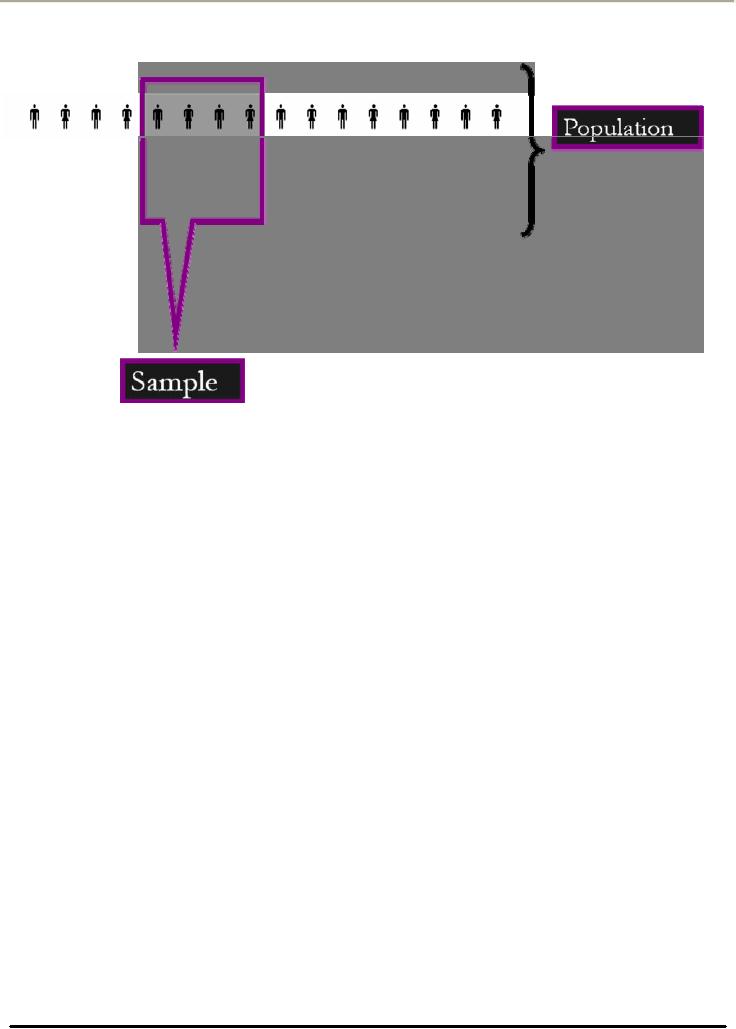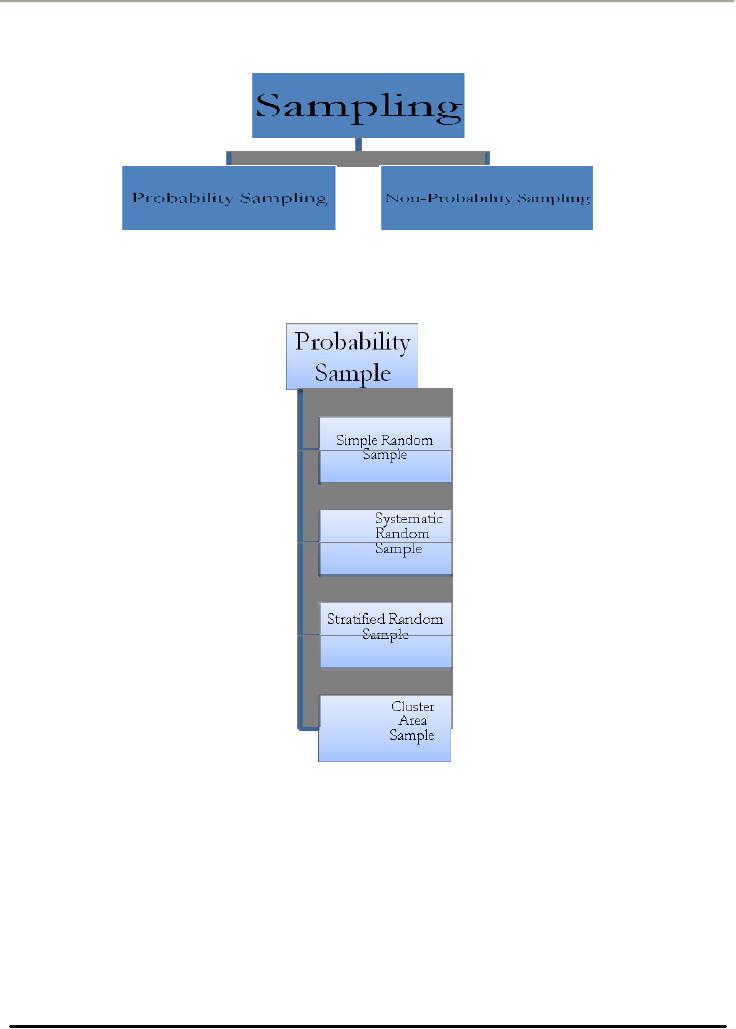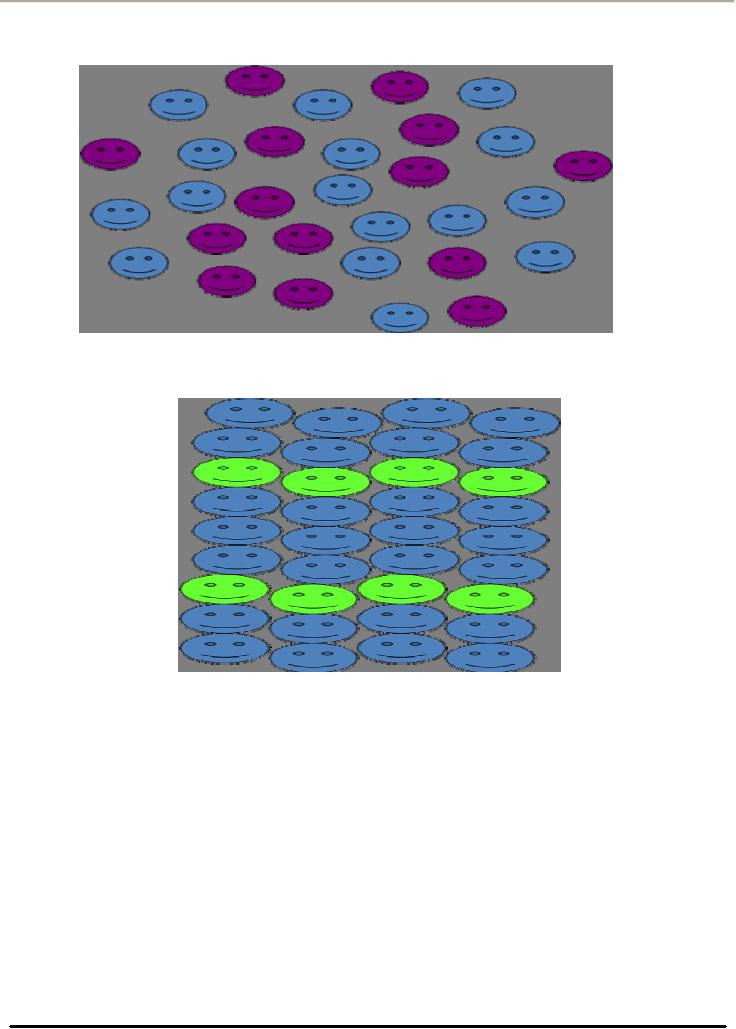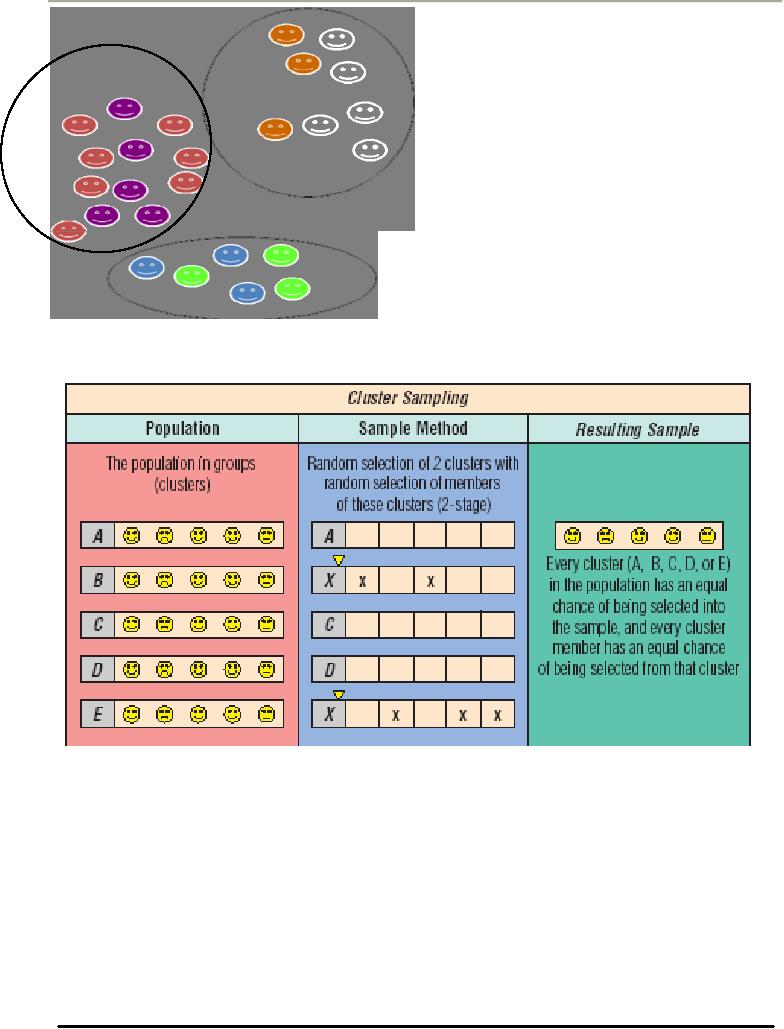 |
CUSTOMER SATISFACTION MEASUREMENT, SAMPLING, AND DATA ANALYSIS AND REPORTING |
| << QUALITATIVE RESEARCH DESIGNS & DATA COLLECTION METHODS |
| MARKET SEGMENTATION AND ITS BASES:Geographical Segmentation >> |

Consumer
Psychology (PSY -
514)
VU
Lesson
11
CUSTOMER
SATISFACTION MEASUREMENT,
SAMPLING,
AND
DATA ANALYSIS AND REPORTING
OBJECTIVES:
Understanding:
Customer
Satisfaction Measurement
Sampling
Data
Analysis & Reporting
Research
Findings
Ethics
in Research
Grouping
levels of customer satisfaction
and its measurement is critical
for every company. Marketers
use such
data
to retain customers, sell more
products, and improve the
value and quality of their
offerings to operate
more
efficiently
and effectively. Customer
Satisfaction measurement includes
qualitative and quantitative
measures as
well
as a variety of contact methods
A.
Customer Satisfaction
Measures
Measure
how satisfied customers are
with relevant attributes of the product or
service and the relative
importance
of
these attributes. Generally these surveys
include 5-point semantic differential
scale, ranging from very
satisfied
to
very dissatisfied. Research suggests
that customers who indicate they
are very satisfied (typically a score of
5 on
the
satisfaction scale are much
more profitable and loyal
than the customers who indicate they
are satisfied).
Companies
striving to get merely
satisfied customers are making a
crucial mistake
Service
Expected VS. The Service
Received
Some
marketers maintain that Customer
Satisfaction is a function of the difference
between what they had
expected
to get from the product or
service purchased and their
perceptions of what they received.
Adequate
Service VS. Desired
Service
Measures
the performance of the service received
against two expectation
levels:
Adequate
Service
Desired
Service
It
also measures the customers'
future intentions regarding
purchasing the service
Mystery
Shoppers
Professional
observers who pose as
customers in order to interact with
and provide un-biased
evaluations of the
company's
service personnel to identify
opportunity for improving
productivity and efficiency
Complaint
Analysis System
Complaint
Analysis System encourages
customers to complain about an
unsatisfactory product or service.
Such
systems
provide suggestions for
improvement by having the respondents
complete the forms asking
specific
questions
beyond the routine "how
was everything" stuff.
Sometimes Listening Posts, hotlines
are established where
specifically
designated employees either listen to
customers' comments or actively solicit
input from them
Analyzing
Customer Defection
This
means finding out why
customers leave the company
intervening when customer
behavior shows that
they
are
going to defect
B.
Population
The
group of people that a research question
pertains to is typically called the
population. In
some cases, the
population
can be easily studied. Example:
biographical studies of Pakistani
presidents. In most
real-world
research
scenarios, we cannot study the population
per se. Instead, we typically
study a subset
of the
population.
33

Consumer
Psychology (PSY -
514)
VU
Sample
The
subset of population that is
studied is typically called a
sample.
Sampling
Plan
Sampling
plan addresses three
questions:
Whom
to survey (sampling unit)?
How
many to survey (the sample
size)?
How
to select them (sampling
procedures)?
1.
Whom to Survey?
Deciding
whom to survey requires
explicit definition of the universe or
boundaries of the market from
which the
data
are sought so that an appropriate
sample can be
selected
Example
Youth
18-24
years old
College
Going
SEC,
A, B and C
2.
How Many To
Survey?
Size
of the sample depends upon
two main factors:
Size
of the budget
Degree
of confidence that the marketer
wants to place in
findings
Large
Sample/Small Sample
The
larger the sample, the more
likely the responses will reflect the
total universe under study. A small
sample can
often
provide highly reliable findings,
depending upon n the sampling procedure
adopted. The exact number
needed
to achieve a specific level of confidence in the
accuracy of findings can be computed
with a mathematical
formula.
34

Consumer
Psychology (PSY -
514)
VU
Types
of Sampling (How to
select?)
1.
Probability Sampling
Respondents
are selected in such a way
that every member of
population studied has known
non-zero chance of
being
selected
35

Consumer
Psychology (PSY -
514)
VU
1.
Simple Random
Sample
Every
member of population has a
known and equal chance of
being selected
2.
Systematic Random
Sample
A
member of population is selected at
random and then every nth
person is selected
atified
Random Sample
The
population is divided into
mutually exclusive groups
(such as age groups) and
then random sample is drawn
from
each group
36

Consumer
Psychology (PSY -
514)
VU
3.
Cluster Area
Sample
The
population is divided into
mutually exclusive groups
(such as blocks in a geographical
area) and the
researcher
draws
a sample of the groups to
interview
37

Consumer
Psychology (PSY -
514)
VU
Non-Probability
Sampling
Specific
elements from the population under
study have been predetermined in a
nonrandom fashion on the basis
of
the researcher's judgment or decision to
select a given number of respondents from
a particular group
Types
of Non-Probability Sampling
Convenience
Sample
The
researcher selects the most
accessible population members
from whom to obtain
information (e.g. students
in
class
room)
1.
Judgment Sample
The
researcher uses his/her judgment to
select population members
who are good sources
for accurate
information
(e.g. experts in the relevant fields of
study)
2.
Quota Sample
The
researcher interviews a prescribed number of people in
each of several categories
(e.g. 50 men, 50
women)
3.
Data Analysis and Reporting Research
Findings
Field
Staff in Quantitative Research
Qualitative
& Quantitative Research
Research
Report
Ethics
in Research
Field
Staff in Quantitative Research
A
quantitative study generally
uses filed staff that is either recruited
and trained directly by the researcher
or
contracted
from a company that
specializes in in conducting field
interviews
Qualitative
& Quantitative Research
Qualitative
Research: The
moderator or test administrator usually
analyzes the responses
received
Quantitative
Research: The
researcher supervises the
analysis:
�
Open
ended responses are first
coded and quantified (i.e.
converted into quantified
scores)
�
Then
all of the responses are tabulated
and analyzed using
sophisticated analysis programs
that correlate the
data
by selected variables and
cluster the data by selected
demographic characteristics
Research
Report
In
both qualitative and
quantitative research, the research
report includes:
�
Brief
executive summary if the
findings
�
May
or may not include recommendations
for
marketing action
�
The
body
of the
report includes a full description of the
methodology used
�
Quantitative
research report also
includes tables and graphics
to support findings
�
A
sample of questionnaire is usually
included in the appendix to enable the management to
evaluate the
objectivity
of findings
Ethics
in Consumer Research
1.
Consumer researchers must
ensure that studies are
objective and free of bias.
An
organization opposed to the president of a
country may retain a research
firm that will generate
a
national
sample by asking the
respondents:
Do
you believe that president
should be doing a better job
at running the country?
Such
a study may discover that
65% of the respondents think that
president should be doing a better
job.
Another
study using the national
sample may ask
respondents:
38

Consumer
Psychology (PSY -
514)
VU
Do
you approve or disapprove of the way
the president is doing her
job?
Such
a study may also discover
that 65% of the respondents think
that president should
be
doing a better job. The
second study may be more
objective because the questions was
not stated in a
biased
fashion
2.
Consumer Researchers must not mistreat
respondents
�
Avoid
unnecessary long interviews stemming
from the logic that "as long
as we are interviewing this
person
we may also try to find
out ....
�
Lengthy
interviews where consumers are held on
the phone for more than 30
minutes (often lied to
when
they
ask how much longer the call
is going to take)
�
On mall
intercepts when the subjects are
told that it will only
take a few minutes of their
time and the
interview
goes on for more than 40
minutes
�
Sales
pitches from telemarketers
disguised as research studies
must be avoided
3.
General Guidelines
�
At the
start of all surveys, interviewers
must clearly identify
themselves and the company
for which they
are
working , explain what the survey entails
and state the true expected
duration of the interview
�
They
should reassure the respondents that
there are no right or wrong
answers
�
If the
respondents are being paid they should be
notified so at the start of the
interview
�
Privacy
of the respondents must be protected and
guarded
�
Some
unethical consumer researchers have
sold data about consumers to
marketers seeking persons
with
specific
characteristics that will be
targeted as prospective
buyers
Key
Terms of the
Chapter
�
Attitude
Scales
�
Complaint
Analysis
�
Consumer
Panel
�
Customer
Lifetime Value Profiles
�
Customer
Satisfaction Measurement
�
Depth
Interview
�
Experimentation
�
Exploratory
Study
�
Focus
Groups
�
Interpretivism
�
Mail
Surveys
�
Mechanical
Observation
�
Motivational
Research
�
Mystery
Shoppers
�
Non-Probability
Samples
�
Observational
Research
�
Online
Surveys
�
Personal
Interview Survey
�
Physiological
Observation
�
Positivism
�
Primary
Data
�
Probability
Sample
�
Projective
Techniques
�
Qualitative
Research
�
Reliability
39

Consumer
Psychology (PSY -
514)
VU
�
Research
Objectives
�
Secondary
Data (Internal & External)
�
Test
Marketing
�
Validity
40
Table of Contents:
- INTRODUCTION TO CONSUMER PSYCHOLOGY:Consumer Behavior
- INTRODUCTION TO CONSUMER PSYCHOLOGY:Consumer research
- INTRODUCTION TO CONSUMER PSYCHOLOGY:Marketing Mix, Product, Price
- INTRODUCTION TO CONSUMER PSYCHOLOGY:Customer Value, Perceived Value
- VALUE AND RETENTION FOCUSED MARKETING AND CONSUMER DECISION MAKING PROCESS
- CONSUMER RESEARCH:Quantitative Research, Qualitative Research
- MAJOR STEPS IN CONSUMER RESEARCH PROCESS:Design of Primary research
- QUANTITATIVE RESEARCH DESIGNS & DATA COLLECTION METHODS
- QUANTITATIVE RESEARCH DATA COLLECTION TECHNIQUES:ATTITUDE SCALES
- QUALITATIVE RESEARCH DESIGNS & DATA COLLECTION METHODS
- CUSTOMER SATISFACTION MEASUREMENT, SAMPLING, AND DATA ANALYSIS AND REPORTING
- MARKET SEGMENTATION AND ITS BASES:Geographical Segmentation
- BASES FOR SEGMENTATION: DEMOGRAPHIC SEGMENTATION PSYCHOGRAPHIC SEGMENTATION
- BASES FOR SEGMENTATION: SOCIOCULTURAL SEGMENTATION USE RELATED SEGMENTATION USAGE SITUATION SEGMENTATION
- BASES FOR SEGMENTATION: BENEFIT SEGMENTATION:Intrinsic Cues
- BASES FOR SEGMENTATION: HYBRID SEGMENTATION STRATEGIES
- MARKET SEGMENTATION IMPLEMENTING SEGMENTATION STRATEGIES ENVIRONMENTAL INFLUENCES CULTURE
- HOW CULTURE IS LEARNT ENVIRONMENTAL INFLUENCES:Formal Learning
- CULTURE AND ITS MEASUREMENT ENVIRONMENTAL INFLUENCES
- MEASUREMENT OF CULTURE ENVIRONMENTAL INFLUENCES:Consumer Fieldwork
- SUBCULTURE CHAPTER 4: ENVIRONMENTAL INFLUENCES
- AGE AND GENDER SUBCULTURE CHAPTER 4: ENVIRONMENTAL INFLUENCES
- BASES FOR SEGMENTATION: BENEFIT SEGMENTATION:Market Segmentation
- SOCIAL CLASS CHAPTER 4: ENVIRONMENTAL INFLUENCES:Occupation
- CONSUMER SOCIAL CLASSES CHAPTER 4: ENVIRONMENTAL INFLUENCES:Affluent Consumer
- CONSUMER SOCIAL CLASSES CHAPTER 4: ENVIRONMENTAL INFLUENCES:Membership Group
- CONSUMER SOCIAL CLASSES CHAPTER 4: ENVIRONMENTAL INFLUENCES:Shopping Groups
- UNDERSTANDING PERSONALITY CHAPTER 5: INDIVIDUAL DETERMINANTS OF CONSUMER BEHAVIOR
- CONSUMER PERSONALITY, TRAIT THEORY AND SELF IMAGES
- CONSUMER MOTIVATION:Needs, Goals, Generic Goals
- UNDERSTANDING LEARNING:Intentional and Incidental Learning, Implications for Marketers
- INSTRUMENTAL CONDITIONING, INFORMATION PROCESSING AND MEMORY
- ATTITUDES:Characteristics of Attitudes, Attitudes have consistency
- ATTITUDE FORMATION AND CHANGE:How attitudes are learned?
- ATTITUDE CHANGE STRATEGIES:Resolving two conflicting attitudes
- INTRODUCTION TO CONSUMER DECISION MAKING:Decision Complexity
- Problem Recognition, Search and Evaluation and Decision and Purchase
- Decision and Purchase:Consumer Decision Rules, Output, Relationship Marketing
- Decisions Related to Post Purchase:Product Set up and Use
- Marketing Implications of Decisions Related to Post Purchase:Understanding
- Post Purchase Evaluation:Determinants of Satisfaction, Consumer Complaint Behavior
- Post Purchase Dissonance:Dissonance Reduction, Marketing Implications
- Consumerism:Roots of Consumerism, The Nature of Consumerism
- Consumerism – Issues and Responses:Environmental Concerns, Consumer Privacy
- Review – Consumer Psychology Course:Consumer Research, Consumerism